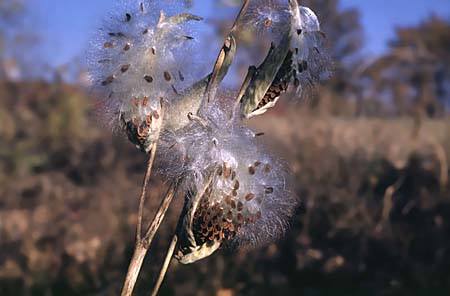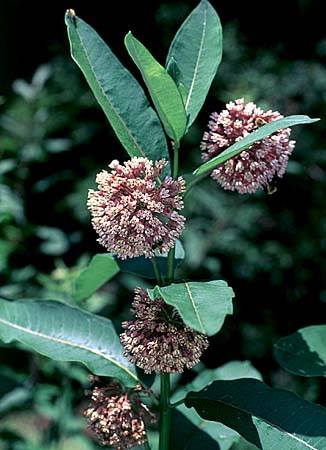Friend? Foe? Pest? Weed? Wildflower? Good? Bad? These are all questions that might be asked about a plant this is common (more so in the past than now) along roadsides and in pastures: The Common Milk Weed whose botanical name is Alcepias.
This plant grows 4’to 6′ tall along roadsides and in fields. Farmers consider them pests and use insecticides on them—except in Nebraska and South Dakota where they are now raised for the “rubber-like” milky sap they produce as well as the white silk-like fibers harvested from their seed pods.
They provide one of the main food sources for the larvae of the Monarch Butterfly which has difficulty surviving without them.
As they emerge from the ground, the first three our four leaves are harvested and used as greens in salads or are cooked and eaten like spinach. If you let it get bigger than 3″, the sap will be bitter and ruin the greens.
But here’s something I’ll bet most of you didn’t know. The common milkweed was one of the most important utilitarian plants to Native Americans. The long 4′ to 6′ stem of the milkweed procudes long, very strong fibers which the Native people used to produce cord for storage bags and fish nets. When the plant is at its full height, and after the first frost, Natives harvested the stem and peeled back the outer layer of “bark’ revealing these long white fibers on the interior of the plant stem. These were taken out, placed across the upper leg, the ends pushed together and then rolled under the palm of the hand. These long fibers were then used to weave bags and nets—some were even woven into summer moccasins. It would have been very difficult for the Native people to survive without Milkweed.
Once when I was director of Minnetrista Cultural Center in Muncie, Indiana a group of Native people from Oklahoma were visiting. When they arrived, they came into the center very excited and told me they had made a wonderful discovery. They took me to a field on the outskirts of Muncie and showed me lots of healthy milkweed growing in a corn field.
As it happened, I knew the owner of the field and you can imagine his great surprise when I called to ask if my Native friends could harvest his milkweed. We spent the next two days harvesting and canning milkweed for them to take home. They were having drought in Oklahoma and their local milkweek was almost non-existent.
We need to be careful about labeling plants weeds or wildflowers. Someday we may need that plant to survivie.

